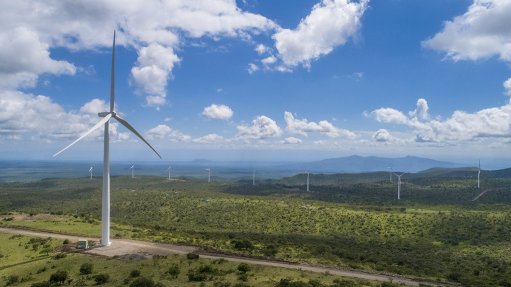
Kipeto wind farm
Renewable energy company Kipeto Energy (KEP) has connected the Kipeto wind farm to the national grid and will start generating power in the next week.
KEP has connected a 17-km-long 220 KV high voltage transmission line, linking the facility to the national grid at the Isinya substation, and signalling the start of the go-live process.
The project’s 60 GE 1.7-103 wind turbines will be switched on in stages as part of a gradual ramp-up process, with all commercial tests due to be concluded within the next few months.
Located in Kajiado county, Kipeto is Kenya’s second largest wind power project.
It has a 20-year power purchase agreement with Kenya Power and Lighting Company (KPLC) and once it is at full capacity, Kipeto will generate 100 MW of clean wind energy for the Kenyan people.
This will be a significant contribution to Kenya’s Vision 2030 and Big Four Agenda, the company notes.
The final connection and energisation will result in the transmission line and associated equipment being handed over this week to KPLC for future care and operation.
The Kipeto project reached financial close in December 2018, marking the beginning of its two-year construction phase.
The project is funded by equity from Actis-backed BioTherm Energy (88%) and Kenyan company Craftskills (12%) alongside senior debt from development finance institution the US International Development Finance Corporation.
KEP leased and secured more than 60 plots within the project area for the wind turbine footprint and the transmission line through voluntary participation of land owners, and has undertaken a number of local initiatives.
More than 800 jobs were created during the construction phase of the project and an additional 60 permanent jobs are anticipated during the operational phase.
Around 200 families are expected to benefit directly from the turbine revenue located on their land, with the company having established a community trust to oversee further distribution of profits to the wider local area.
To ensure international environmental standards were followed, KEP worked with specialist consultants during both the planning and development stages of the project to undertake a series of environmental assessments and impact studies.